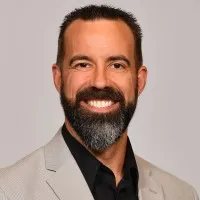PreSales is a relatively new function, which means there’s a lot of excitement and interest about what the future of the role looks like. Is it in the C-suite, or in a new function entirely? That’s why I was so delighted to talk to Peter Polizzi, SVP of Market Strategies & Technical Sales at Splunk about the future of the PreSale profession and role as part of our recent PreSales Leadership Collective Symposium.
What Splunk is Doing
I truly think that what Peter and the rest of the leadership team are doing at Splunk could be the future of PreSales. Peter joined Splunk about 18 months ago as the director of PreSales.
But recently they joined several teams, including the PreSales function, into the Market Strategies & Technical Sales department. They did so because they noticed that almost every function in the business touched the customer experience, but there were lots of air pockets in between those functions where lots of messaging, productivity, and speed were getting lost.
He had a dialogue with several other leaders about what it would look like if they brought their orgs together to engage customers from one end of the customer journey right up until the end, with one set of metrics and KPIs. And that’s how the new team was born.
The New Function
This org change brought together a few teams into a three-part function.
Their Market Strategies team sets the plan and strategy, and serves as a mirror to product and marketing after products are developed in the field. They find partnerships, markets, and sales plays for the whole function and organization.
Their Market Solutions and Interlock team comes next - they align and deploy assets. They also put together all of the technical content like demos and enablement. And they interlock with the field by both consuming what is produced and offering feedback on planning and products as well.
Finally, their Strategic Advisors, Sales Engineers, and Specialists team is there to create new horizons for customers. Their corporate PreSales team helps functional SEs spend more time with their customers instead of working on other tasks. And their Center of Excellence is a centralized function that helps develop best practices for other teams.
This team structure is still being fine-tuned as they finalize the deployment, but so far it’s going well.
What It Solves
This new structure solves a few problems that are common in PreSales.
First, it connects the dots between product teams and PreSales pros who are expected to sell a product they may not agree with. They now crowdsource ideas from all functions, not just product, to make each customer engagement richer and better suited to customer needs.
It also helps everyone at Splunk understand how to get better and better at what they do. Feedback from customers goes directly into making the product better. Plus it increases consistency and keeps everyone aligned to one strategy.
How They Did It
This reorganization really started with an outcome. The leadership team had to decide how to take 5-7 different teams and point them all towards a common goal. Establishing that common goal was easy, but deciding exactly how to get there was hard. It took them an entire quarter to align on KPIs and metrics, focusing on outcomes instead of activities. They were committed to focusing on their customers and partners first - if something didn’t benefit them, it was wasting everyone's time.
Peter also hired a change management person. This role helped everyone understand how and when to communicate, how to manage such a large volume of rapid change across multiple levels of the organization and across functions. A change management role was needed because Splunk had a successful and tenured PreSales function and they’re the last team to change, because they provide the glue that holds together everything that’s not working in the organization. The change management partner helped him figure out how to win the hearts and minds of the PreSales team and understand what really matters to people and what doesn’t as they made changes.
It wasn’t easy to take a company that has been successful and get people to agree to break the very things that made it successful to try to make it more successful. But Peter had a lot of support and trust from the leadership and executive team that made it happen.
While the team structure and new way of working is still in progress, Peter is optimistic everything will be in place by the end of the year. I for one am excited to see how this new approach to PreSales develops and evolves over time.
Key Takeaways
PreSales is a relatively new function, which means there’s a lot of excitement and interest about what the future of the role looks like. Is it in the C-suite, or in a new function entirely? That’s why I was so delighted to talk to Peter Polizzi, SVP of Market Strategies & Technical Sales at Splunk about the future of the PreSale profession and role as part of our recent PreSales Leadership Collective Symposium.
What Splunk is Doing
I truly think that what Peter and the rest of the leadership team are doing at Splunk could be the future of PreSales. Peter joined Splunk about 18 months ago as the director of PreSales.
But recently they joined several teams, including the PreSales function, into the Market Strategies & Technical Sales department. They did so because they noticed that almost every function in the business touched the customer experience, but there were lots of air pockets in between those functions where lots of messaging, productivity, and speed were getting lost.
He had a dialogue with several other leaders about what it would look like if they brought their orgs together to engage customers from one end of the customer journey right up until the end, with one set of metrics and KPIs. And that’s how the new team was born.
The New Function
This org change brought together a few teams into a three-part function.
Their Market Strategies team sets the plan and strategy, and serves as a mirror to product and marketing after products are developed in the field. They find partnerships, markets, and sales plays for the whole function and organization.
Their Market Solutions and Interlock team comes next - they align and deploy assets. They also put together all of the technical content like demos and enablement. And they interlock with the field by both consuming what is produced and offering feedback on planning and products as well.
Finally, their Strategic Advisors, Sales Engineers, and Specialists team is there to create new horizons for customers. Their corporate PreSales team helps functional SEs spend more time with their customers instead of working on other tasks. And their Center of Excellence is a centralized function that helps develop best practices for other teams.
This team structure is still being fine-tuned as they finalize the deployment, but so far it’s going well.
What It Solves
This new structure solves a few problems that are common in PreSales.
First, it connects the dots between product teams and PreSales pros who are expected to sell a product they may not agree with. They now crowdsource ideas from all functions, not just product, to make each customer engagement richer and better suited to customer needs.
It also helps everyone at Splunk understand how to get better and better at what they do. Feedback from customers goes directly into making the product better. Plus it increases consistency and keeps everyone aligned to one strategy.
How They Did It
This reorganization really started with an outcome. The leadership team had to decide how to take 5-7 different teams and point them all towards a common goal. Establishing that common goal was easy, but deciding exactly how to get there was hard. It took them an entire quarter to align on KPIs and metrics, focusing on outcomes instead of activities. They were committed to focusing on their customers and partners first - if something didn’t benefit them, it was wasting everyone's time.
Peter also hired a change management person. This role helped everyone understand how and when to communicate, how to manage such a large volume of rapid change across multiple levels of the organization and across functions. A change management role was needed because Splunk had a successful and tenured PreSales function and they’re the last team to change, because they provide the glue that holds together everything that’s not working in the organization. The change management partner helped him figure out how to win the hearts and minds of the PreSales team and understand what really matters to people and what doesn’t as they made changes.
It wasn’t easy to take a company that has been successful and get people to agree to break the very things that made it successful to try to make it more successful. But Peter had a lot of support and trust from the leadership and executive team that made it happen.
While the team structure and new way of working is still in progress, Peter is optimistic everything will be in place by the end of the year. I for one am excited to see how this new approach to PreSales develops and evolves over time.
Key Takeaways
PreSales is a relatively new function, which means there’s a lot of excitement and interest about what the future of the role looks like. Is it in the C-suite, or in a new function entirely? That’s why I was so delighted to talk to Peter Polizzi, SVP of Market Strategies & Technical Sales at Splunk about the future of the PreSale profession and role as part of our recent PreSales Leadership Collective Symposium.
What Splunk is Doing
I truly think that what Peter and the rest of the leadership team are doing at Splunk could be the future of PreSales. Peter joined Splunk about 18 months ago as the director of PreSales.
But recently they joined several teams, including the PreSales function, into the Market Strategies & Technical Sales department. They did so because they noticed that almost every function in the business touched the customer experience, but there were lots of air pockets in between those functions where lots of messaging, productivity, and speed were getting lost.
He had a dialogue with several other leaders about what it would look like if they brought their orgs together to engage customers from one end of the customer journey right up until the end, with one set of metrics and KPIs. And that’s how the new team was born.
The New Function
This org change brought together a few teams into a three-part function.
Their Market Strategies team sets the plan and strategy, and serves as a mirror to product and marketing after products are developed in the field. They find partnerships, markets, and sales plays for the whole function and organization.
Their Market Solutions and Interlock team comes next - they align and deploy assets. They also put together all of the technical content like demos and enablement. And they interlock with the field by both consuming what is produced and offering feedback on planning and products as well.
Finally, their Strategic Advisors, Sales Engineers, and Specialists team is there to create new horizons for customers. Their corporate PreSales team helps functional SEs spend more time with their customers instead of working on other tasks. And their Center of Excellence is a centralized function that helps develop best practices for other teams.
This team structure is still being fine-tuned as they finalize the deployment, but so far it’s going well.
What It Solves
This new structure solves a few problems that are common in PreSales.
First, it connects the dots between product teams and PreSales pros who are expected to sell a product they may not agree with. They now crowdsource ideas from all functions, not just product, to make each customer engagement richer and better suited to customer needs.
It also helps everyone at Splunk understand how to get better and better at what they do. Feedback from customers goes directly into making the product better. Plus it increases consistency and keeps everyone aligned to one strategy.
How They Did It
This reorganization really started with an outcome. The leadership team had to decide how to take 5-7 different teams and point them all towards a common goal. Establishing that common goal was easy, but deciding exactly how to get there was hard. It took them an entire quarter to align on KPIs and metrics, focusing on outcomes instead of activities. They were committed to focusing on their customers and partners first - if something didn’t benefit them, it was wasting everyone's time.
Peter also hired a change management person. This role helped everyone understand how and when to communicate, how to manage such a large volume of rapid change across multiple levels of the organization and across functions. A change management role was needed because Splunk had a successful and tenured PreSales function and they’re the last team to change, because they provide the glue that holds together everything that’s not working in the organization. The change management partner helped him figure out how to win the hearts and minds of the PreSales team and understand what really matters to people and what doesn’t as they made changes.
It wasn’t easy to take a company that has been successful and get people to agree to break the very things that made it successful to try to make it more successful. But Peter had a lot of support and trust from the leadership and executive team that made it happen.
While the team structure and new way of working is still in progress, Peter is optimistic everything will be in place by the end of the year. I for one am excited to see how this new approach to PreSales develops and evolves over time.
Key Takeaways






.webp)


